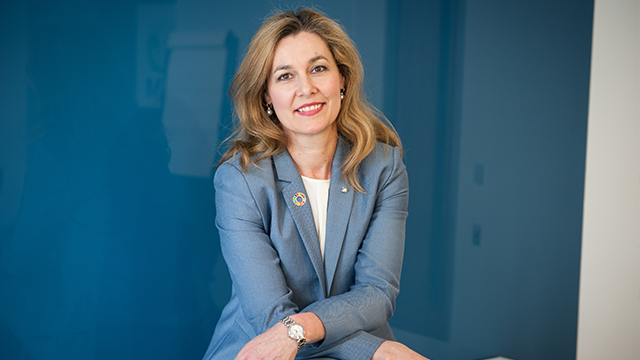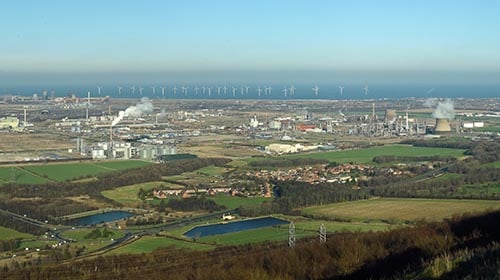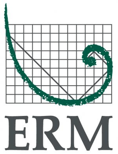Megatrends
Megatrends encompassing significant social, economic, political, environmental or technological changes have a major impact on business and society as a whole, and will continue to do so for decades to come.

Of the key megatrends presenting major challenges to government, industry and civil society over the coming years, four are particularly relevant to ERM’s work with our clients within the wider context of sustainable development. As a leading sustainability consultancy, ERM understands the megatrends’ impact on the technical, business and societal challenges facing our clients.
Climate change

Global political action, regional legislation, technology breakthroughs, market disruption, extreme weather events, investor priorities and consumer sentiment make the transition to a low-emissions future fundamentally important to all businesses. The way companies manage this transition takes on new significance as stakeholders look to accurately assess and measure the environment’s impact on a company’s business models, assets and reputation, as well as the organizational preparedness to cope with this unprecedented energy shift.
The low-emissions transition is well underway – driven by intensifying climate policy, advances in technology, changing investor sentiment and fundamental market shifts. In December 2015, the Paris Agreement set a global target to reduce the impact of climate change to below 2 degrees Celsius through Nationally Determined Contribution Plans (NDCs). According to the Emissions Gap Report 2017 issued by the UN Environment Programme, current state pledges in the NDCs cover no more than one-third of the emission reductions needed.1 Society must achieve even greater emissions reductions than those pledged by countries, recognizing continued forecast growth in global energy demand.
For many companies climate risk is already very real, creating value chain vulnerabilities and prompting consumer demand for change. For the investment community, the risks posed by a company’s greenhouse gas emissions, or its dependency on carbon in the value chain, is of particular concern. Climate-related risk is no longer just an environmental issue, but also one that has a direct impact on a company’s longer-term financial standing, reputation and ability to attract investment.
Learn more about how this relates to ERM's work with clients: Tackling climate changeDigital transformation

Technology is accelerating the pace of change. It drives new - and often disruptive – ways of doing business in response to multi-faceted and increasingly complex challenges. Cloud computing, robotics, the Internet of Things, machine learning and artificial intelligence are transforming customer expectations, product development, collaboration and organizational structures, while changing how citizens engage companies, government and civil society. This represents a significant opportunity for our clients - from how they engage with key stakeholders to how they optimize their operations.
Smarter products, better collaboration, faster processes and lower costs are just some of the drivers behind new technology adoption. Greater access to technology, particularly mobile devices, means greater access (for those with adequate bandwidth and skills) to education, work, financial services and information, as well as new markets and buyers for goods. By enabling greater productivity and agility, digital technology enables companies to evolve and improve their operations, but not without risks.
All of this is reliant on the flow of accurate and timely data. While real-time access to accurate and granular data has become essential to maximizing efficiency and agility, the risks associated with data integrity, security and privacy are of increasing concern to companies, governments and the public. It is the ability to derive insights from data that will set well-performing companies apart as they manage complex environmental and social challenges.
Greater availability and adoption of technology will play a key role in addressing a range of socio-economic and environmental challenges. At the same time, it presents a host of new environment and social impacts to address – from intensive energy use to the elimination of jobs.
Learn more about how this relates to ERM's work with clients: Tech-enabled innovationPopulation growth

According to the United Nations the world’s population is expected to increase by more than 30 percent to upwards of 9 billion between now and 2050. The additional food, energy, homes and transportation required for these extra people will place an additional burden on the planet’s already strained resources.
A large proportion of this population increase will occur in the world’s less developed regions, including Africa, Asia and Latin America.
Key factors behind the continuing population growth in less developed regions are lower rates of infant mortality and greater life expectancy thanks to improved standards of living, including greater access to clean drinking water. As a result, tomorrow’s population will not only be larger but older, which creates additional challenges such as increased pressure on healthcare and pensions.2
More than 50 percent of the world’s population lives in urban areas today. By 2045, global urban population will increase 1.5 times to 6 billion people, according to the World Bank.3 Urbanization brings its own challenges, including access to clean water, unhealthy air, waste disposal issues and increased poverty.
With more people, the competition for vital and often scarce resources will grow. The ability to access sufficient food, water and energy for a growing population will have repercussions for the private sector, civil society and the environment. A collaborative approach is required to address these systemic issues due to their complexity and scale.
Learn more about how this relates to ERM’s work with clients: Sustaining growthEmerging middle classes

The world’s population is not only growing, it is evolving with tremendous expansion of the middle classes – an estimated 5.4 billion people by 2030, compared with 3 billion in 2015, according to a report published by the Brookings Institution.4
As incomes rise among the middle classes, so does access to information and education. Higher incomes and faster development rates mean that the emerging middle classes will have greater spending power and greater expectations. Women in particular will have greater access to education and employment, and they will play a larger role in purchasing and other decisions. These shifts in human development and social balance of the power have major implications for consumption patterns and living standards, as well as for sustainable development.
Experience and data show that although the emerging middle classes often want to retain their culture and traditions, they are keen to adapt their diets and lifestyles as their income increases. Consumption of processed food, meat and dairy products rises along with sales of manufactured goods such as phones and other technological devices, cars, household goods and appliances. The demand for better quality housing, infrastructure and public services rises as well.
The emerging middle classes present companies with new opportunities and new revenue streams. For many, this demand will create opportunities to expand into new markets and to launch new products. However, this upsurge in demand will also increase some long-term risks. It is estimated that more than 3.9 planet Earths would be needed to sustain a global population enjoying the current lifestyle of the average US citizen.5 Food, water, housing and energy, which are already under pressure due to population growth and climate change, will be particularly affected.
Learn more about how this relates to ERM’s work with clients: Sustainable consumptionAddressing sustainable development through the SDGs

The four megatrends highlighted above interact with each other, creating complex implications for the environment and society. Meeting future energy needs, especially among the middle classes, will exacerbate efforts to reduce climate change emissions.
Climate change will alter where and which crops farmers can grow to feed an expanding – and increasingly urbanized – global population. Emerging technologies can greatly improve the quality of life and the environment, provided they are managed to avert potential risks associated with loss of jobs, data privacy and a less active lifestyle. How and when the business world addresses these megatrends will affect whether society can collectively achieve the Sustainable Development Goals (SDGs).
Among our clients, we see a growing interest in contributing to the realization of the SDGs while achieving business value for their organizations. ERM is helping companies identify and manage the environmental and sustainability risks and opportunities related to climate change, digital transformation, population growth and emerging middle classes. Using the SDGs as a framework, we work with clients to set strategies and implement programs to maximize the positive impacts while minimizing the negative impacts resulting from these megatrends.
Achieving the SDGs will take contributions from governments, civil society and businesses. ERM’s contribution to the SDGs is driven not only by our own operations and the work of the ERM Foundation but, importantly, by how we influence and enable the efforts of our clients around the world.
Learn more about how this relates to ERM’s work with clients: SDG contribution1. The Emissions Gap Report 2017. United Nations Environment Programme (UNEP), November 2017: www.unenvironment.org/resources/emissions-gap-report
2. An Aging World: 2015. Wan He, Daniel Goodkind and Paul Kowal, US Census Bureau, International Population Reports, P95/16-1, US Government Publishing Office, 2016: https://www.census.gov/content/dam/Census/library/publications/2016/demo/p95-16-1.pdf.
3. World Urbanization Prospects: The 2014 Revision, Highlights. United Nations, Department of Economic and Social Affairs, Population Division, 2014: https://esa.un.org/unpd/wup/publications/files/wup2014-highlights.pdf.
4. The Unprecedented Expansion of the Global Middle Class: an Update. Homi Kharas, the Brookings Institution, 2017: https://www.brookings.edu/wp-content/uploads/2017/02/global_20170228_global-middle-class.pdf.
5. How many Earths do we need? Charlotte McDonald, BBC News,16, 16 June 2015: http://www.bbc.com/news/magazine-33133712.
